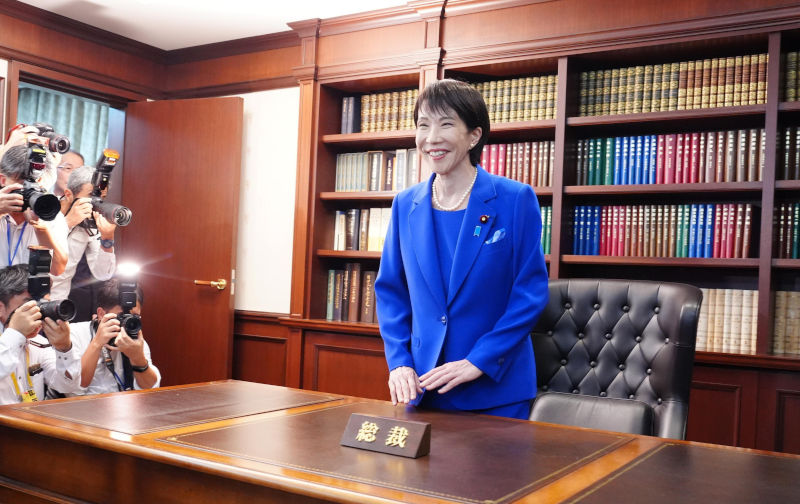Democracies good, China bad – and history not required
November 21, 2025
Japan and China both have legitimate security concerns. But an informed debate needs major media outlets to stop systematically erasing the historical context that shapes how the region understands current events.
When Japanese Prime Minister Sanae Takaichi told parliament that a Chinese military move against Taiwan could constitute a 存立危機事態 (sonritsu kiki jitai, “survival-threatening situation”) for Japan, some big Western media outlets uniformly framed China’s furious response as irrational overreaction.
The New York Times called it a return to "wolf warrior diplomacy." The Wall Street Journal dismissed Beijing as “ picking a fight.” The Age characterised it as a “ fire hose of Chinese rage” over “three words.”
What none of these outlets adequately explained is why those three words matter so much – and why their failure to provide this context represents a dangerous form of historical amnesia that distorts our understanding of East Asian security dynamics.
存立危機事態 (“survival-threatening situation”) is not generic security language. It is a legal term from Japan’s 2015 security legislation that allows Japan to deploy its Self-Defence Forces when “an armed attack against a foreign country that has a close relationship with Japan occurs, and as a result, threatens Japan’s survival and poses a clear danger of fundamentally overturning people’s right to life, liberty and pursuit of happiness.”
To China, the conceptual framework of “existential threat to Japan’s survival” directly echoes the justification language Imperial Japan employed for its most catastrophic acts of aggression in the 20th century.
On 6 September, 1941, Imperial Japan’s Cabinet issued an official decision stating: “Our Empire, for the purpose of self-defence and self-preservation, will complete preparations for war.” This declaration set the stage for Pearl Harbor three months later. The same “existential threat” language justified the 1931 invasion of Manchuria and the broader assault on China that would claim 15-20 million Chinese civilian lives.
Western historians have thoroughly documented this pattern. Manchuria was framed as an economic “lifeline” and solution to what Imperial Japanese planners viewed as “existential challenges to Japan’s future as a great power.” Academic sources confirm that Imperial Japanese leaders “viewed [US demands] as an existential threat to their nation’s sovereignty and ambitions.”
For countries that experienced Japanese occupation – China, Korea, Singapore, and others – hearing a Japanese prime minister invoke 存立危機事態 and its conceptual framework about potential military action carries the weight of generational trauma. It is roughly equivalent to a German chancellor using “Lebensraum” rhetoric while discussing military contingencies in Eastern Europe.
Yet this historical dimension is not mentioned in those media outputs.
Consider The Age’s recent coverage, representative of the broader pattern. The article devoted three dismissive phrases to Imperial Japanese atrocities: “bitter historical enmities,” “old wounds about Japan’s wartime atrocities,” and Chinese “nationalist chest-beating” over the war’s anniversary.
No mention of the Nanjing Massacre, where 200,000-300,000 civilians were murdered. No reference to Unit 731, which performed brutal biological experiments on living humans. No acknowledgment of the “comfort women”— hundreds of thousands of women forced into sexual slavery. No discussion of the “Three Alls Policy” (kill all, burn all, loot all) that devastated Chinese villages. Nothing about the tens of millions Chinese civilian killed.
In contrast, the same article provided detailed coverage of “high-profile attacks on Japanese nationals in China,” including the “stabbing death of a Japanese boy as he walked to school in Shenzhen”—complete with specific locations, circumstances, and government travel warnings.
So balanced, so fair, so good: 20 million deaths dismissed as “old wounds” while some individual incidents receive granular documentation to paint China as the threat.
These outfits frame this controversy through a single lens: democratic allies versus authoritarian China. In this Cold War 2.0 narrative, Japan is the reasonable democracy making prudent security preparations, while China is the irrational bully leveraging economic coercion and “wolf warrior” tactics.
The Wall Street Journal article exemplifies this approach, writing that Takaichi gave “an honest and straightforward answer” and that “China could have made a pro forma protest and moved on.” It dismisses Chinese concerns as mere “bullying,” noting that “Beijing’s first instinct is often to intimidate, threaten and, when possible, to compel.”
This framing requires erasing crucial context. Takaichi didn’t just clarify Japan’s position – she abandoned the strategic ambiguity that previous prime ministers maintained precisely to avoid escalation. She chose to use historically-loaded language that echoes Imperial Japanese invasion justifications. And she did so regarding Taiwan, Japan’s former colony seized from China, making the historical resonance even sharper.
WSJ’s article, like most coverage from these outfits, never explains why “survival-threatening situation” is different from generic security language.
It never acknowledges that breaking strategic ambiguity represents a significant policy shift. It never considers whether regional countries that suffered under Japanese occupation might have legitimate concerns about hearing Imperial-era justification language from Tokyo. What do Koreans, regardless of North or South, think about this language? What about Singapore, where Imperial Japan’s occupation army was brutal?
These perspectives, however, are systematically excluded.
If Western audiences understood that concerns about Japan’s rhetoric extend beyond China to multiple regional democracies, it probably would undermine the democracies vs. autocracy frame that dominates coverage.
This selective historical amnesia has real consequences. When Western audiences don’t understand why Sanae Takaichi’s rhetoric is inflammatory, they can’t grasp the actual dynamics driving regional tensions. They see only “irrational Chinese nationalism” rather than legitimate concerns.
Moreover, this framing provides cover for dangerous escalation. If Takaichi’s abandonment of strategic ambiguity is presented as merely “frank” and “honest” rather than a deliberate provocation using historically charged language, there’s no accountability for inflammatory rhetoric that increases war risks.
Japan and China both have legitimate security concerns. But we cannot have informed debate when major media outfits systematically erase the historical context that shapes how the region understands current events.
The views expressed in this article may or may not reflect those of Pearls and Irritations.
